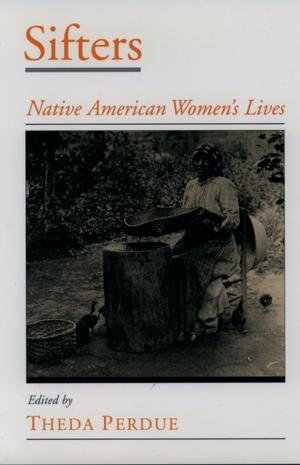Teaching Spirits
Understanding Native American Religious Traditions
Nonfiction, Social & Cultural Studies, Social Science, Cultural Studies, Native American Studies, Sociology, Marriage & Family| Author: | Joseph Epes Brown | ISBN: | 9780199890040 |
| Publisher: | Oxford University Press | Publication: | March 12, 2010 |
| Imprint: | Oxford University Press | Language: | English |
| Author: | Joseph Epes Brown |
| ISBN: | 9780199890040 |
| Publisher: | Oxford University Press |
| Publication: | March 12, 2010 |
| Imprint: | Oxford University Press |
| Language: | English |
Teaching Spirits offers a thematic approach to Native American religious traditions. Through years of living with and learning about Native traditions across the continent, Joseph Epes Brown learned firsthand of the great diversity of the North American Indian cultures. Yet within this great multiplicity, he also noticed certain common themes that resonate within many Native traditions. These themes include a shared sense of time as cyclical rather than linear, a belief that landscapes are inhabited by spirits, a rich oral tradition, visual arts that emphasize the process of creation, a reciprocal relationship with the natural world, and the rituals that tie these themes together. Brown illustrates each of these themes with in-depth explorations of specific native cultures including Lakota, Navajo, Apache, Koyukon, and Ojibwe. Brown was one of the first scholars to recognize that Native religions-rather than being relics of the past-are vital traditions that tribal members shape and adapt to meet both timeless and contemporary needs. Teaching Spirits reflects this view, using examples from the present as well as the past. For instance, when writing about Plains rituals, he describes not only building an impromptu sweat lodge in a Denver hotel room with Black Elk in the 1940s, but also the struggles of present-day Crow tribal members to balance Sun Dances and vision quests with nine-to-five jobs. In this groundbreaking work, Brown suggests that Native American traditions demonstrate how all components of a culture can be interconnected-how the presence of the sacred can permeate all lifeways to such a degree that what we call religion is integrated into all of life's activities. Throughout the book, Brown draws on his extensive personal experience with Black Elk, who came to symbolize for many the richness of the imperiled native cultures. This volume brings to life the themes that resonate at the heart of Native American religious traditions.
Teaching Spirits offers a thematic approach to Native American religious traditions. Through years of living with and learning about Native traditions across the continent, Joseph Epes Brown learned firsthand of the great diversity of the North American Indian cultures. Yet within this great multiplicity, he also noticed certain common themes that resonate within many Native traditions. These themes include a shared sense of time as cyclical rather than linear, a belief that landscapes are inhabited by spirits, a rich oral tradition, visual arts that emphasize the process of creation, a reciprocal relationship with the natural world, and the rituals that tie these themes together. Brown illustrates each of these themes with in-depth explorations of specific native cultures including Lakota, Navajo, Apache, Koyukon, and Ojibwe. Brown was one of the first scholars to recognize that Native religions-rather than being relics of the past-are vital traditions that tribal members shape and adapt to meet both timeless and contemporary needs. Teaching Spirits reflects this view, using examples from the present as well as the past. For instance, when writing about Plains rituals, he describes not only building an impromptu sweat lodge in a Denver hotel room with Black Elk in the 1940s, but also the struggles of present-day Crow tribal members to balance Sun Dances and vision quests with nine-to-five jobs. In this groundbreaking work, Brown suggests that Native American traditions demonstrate how all components of a culture can be interconnected-how the presence of the sacred can permeate all lifeways to such a degree that what we call religion is integrated into all of life's activities. Throughout the book, Brown draws on his extensive personal experience with Black Elk, who came to symbolize for many the richness of the imperiled native cultures. This volume brings to life the themes that resonate at the heart of Native American religious traditions.















